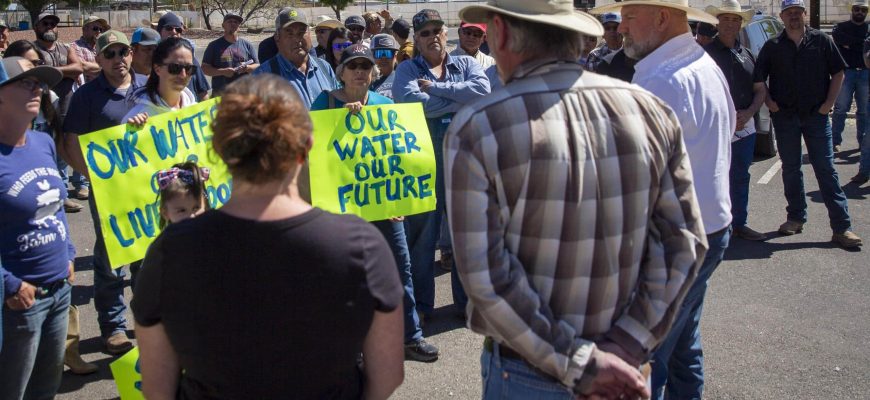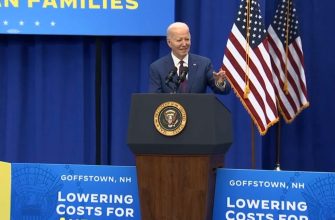The mile-long tractor rally, mostly containing farmers from Valencia County, could not have been ignored, and most importantly, was not ignored by its intended target, the Middle Rio Grande Conservancy District (MRGCD).
The rally arrived at district headquarters on May 8, just hours before the MRGCD board of directors approved a mill levy increase to help fund the fix for the district’s nearly 100-year-old, crumbling infrastructure, which the district recognizes has been the source of many irrigator woes.
As John Deeres and Kubotas arrived at MRGCD headquarters, MRGCD board members, CEO and water managers stood in the parking lot, ready to engage in conversations.
MRGCD directors and managers listened to claims of incompetence and mismanagement. MRGCD leaders recognize the district hasn’t always gotten it right but countered that current leadership is in the process of making improvements, is publicly willing to own up to mistakes and explain the reasoning behind sometimes unpopular decisions.
At the beginning of the 2023 irrigation season, MRGCD committed to diverting enough water to meet 80% of irrigation demand, with the intent of cutting down New Mexico’s debt to the Rio Grande Compact.
The compact is a water-sharing agreement between Colorado, New Mexico and Texas. New Mexico currently owes the compact 93,000-acre feet of water and is facing serious implications if the debt exceeds 200,000 acre-feet. It is true that New Mexico, as a whole, is in debt to Texas. However, MRGCD is judged based on the amount of water it delivers to Elephant Butte. If MRGCD doesn’t send enough water south, the first people that hurts are fellow New Mexicans – like green chile growers in Hatch and pecan farmers in Las Cruces.
While in debt, New Mexico’s water storage is restricted, forcing water managers to largely rely on natural flows to get through the hottest and driest parts of the year. If New Mexico’s debt exceeds 200,000 acre-feet, it is possible MRGCD’s diversion for non-tribal farms could be curtailed altogether.
The 80% demand plan was a point of contention between MRGCD and irrigators, who could not make sense of why they could not get all the water they wanted when the river began overbanking. Once the river started overbanking, to the extent that water was up against the levees in mid-April, the MRGCD pivoted from its 80% plan and started diverting as much water as needed to meet irrigation demand and will continue to do so as long as the river continues overbanking.
This shift was communicated to MRGCD’s 34 Irrigation Systems Operators (ISOs), who are responsible for delivering water to irrigators. Unfortunately, as MRGCD’s water distribution manager detailed at the May 8 board meeting, a small handful of ISOs misunderstood the change, telling farmers in their areas water deliveries would be provided on a 21-day rotation. That information has been corrected and all ISOs now understand the district is on-demand scheduling until further notice.
During rotational scheduling, water managers tell the ISOs how much water they must work with. Now, during demand scheduling, ISOs tell managers how much water they need to meet the demand while continuing to be responsible with water use.
The MRGCD is confident that May and June will be much better, stressed farmers will get relief, and thirsty lands will get a good drink of water.








